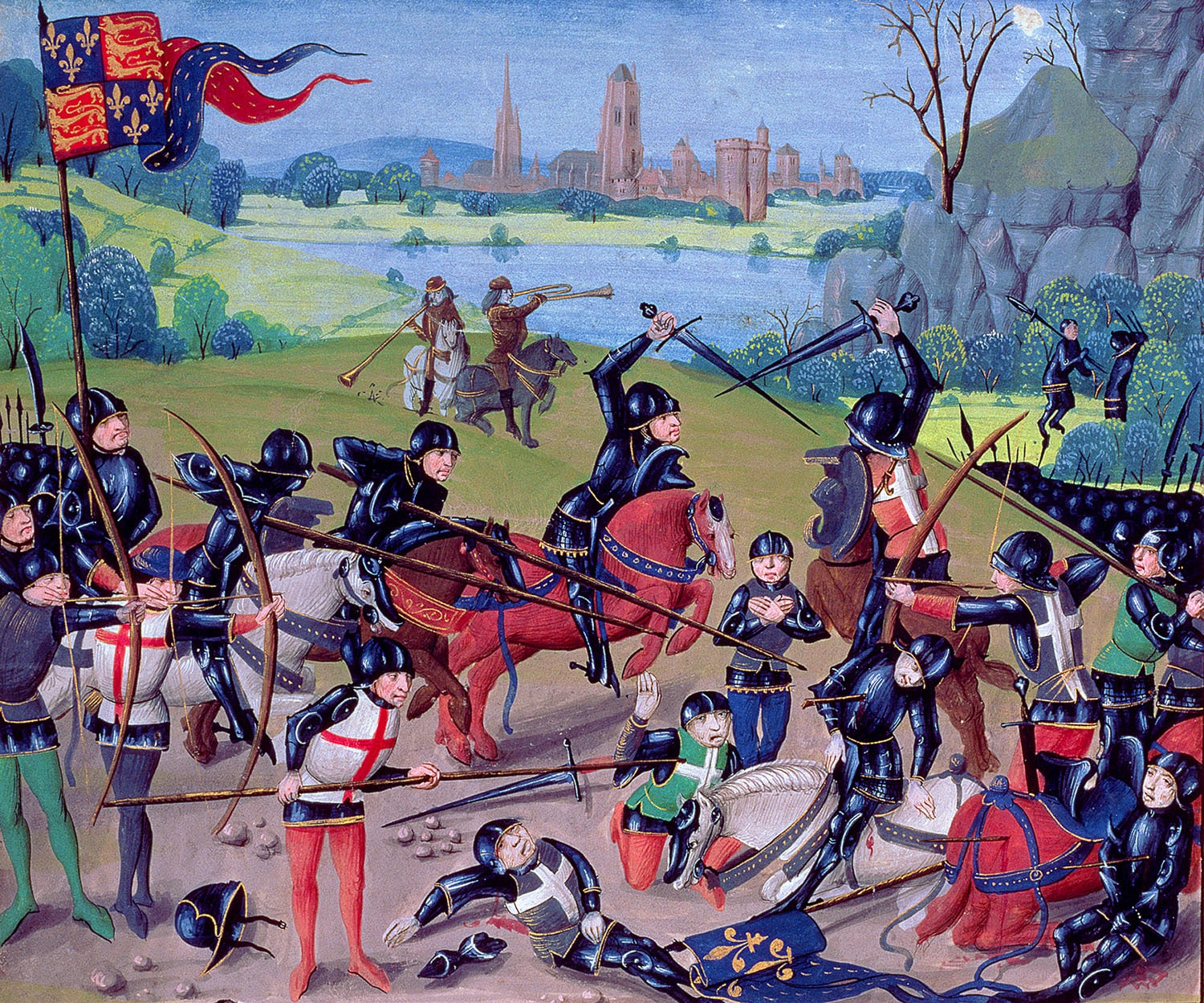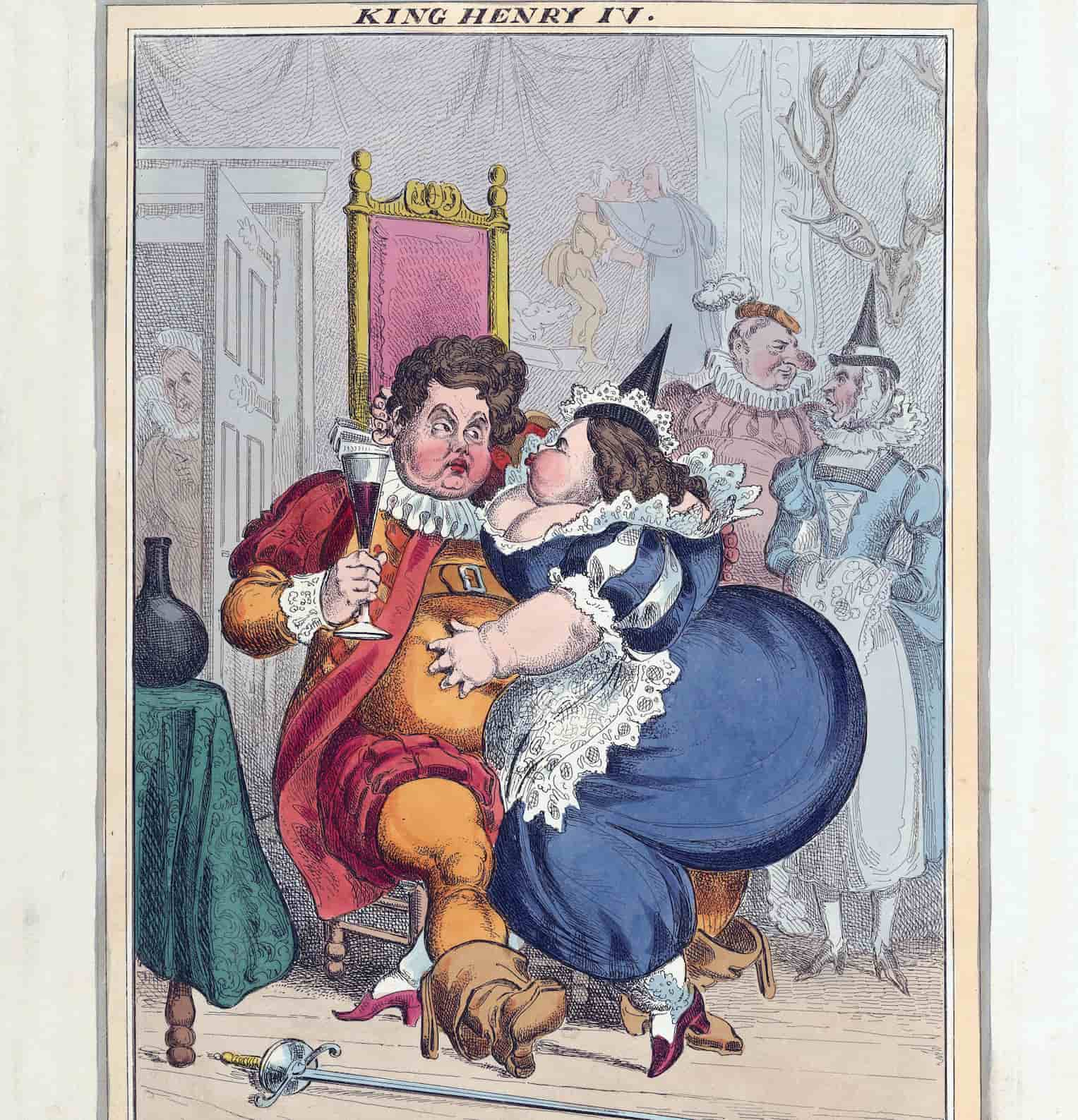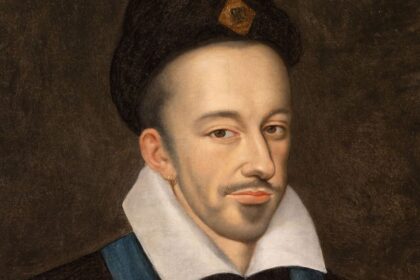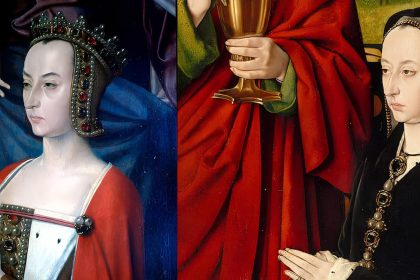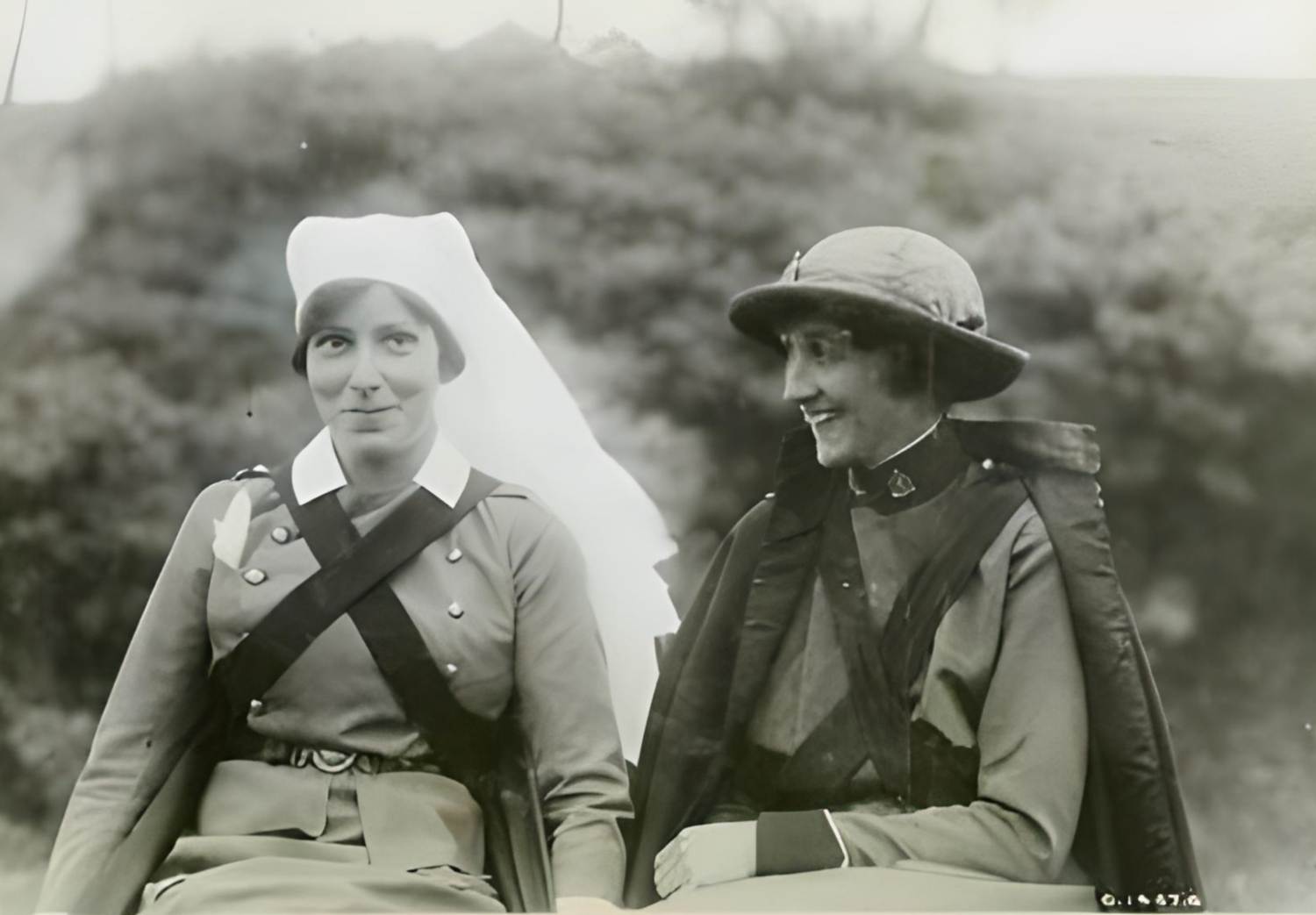From May 23, 1618, to October 24, 1648, Europe was rocked by a series of religious and political wars known as the Thirty Years’ War. Conflict erupted between the Catholic Habsburgs of Spain and the Holy Roman Empire and the largely Protestant rulers of the German kingdoms of the Holy Roman Empire. Between 4 and 7 million people lost their lives in this conflict, which was fought by almost every European country. The Thirty Years’ War finally came to a close with the signing of the Peace of Westphalia (or Treaties of Westphalia) in October 1648. The separation of church and state in Germany was formally established. As Spain’s fortunes diminished, France rose to prominence in European affairs.
Why did the Thirty Years’ War take place?
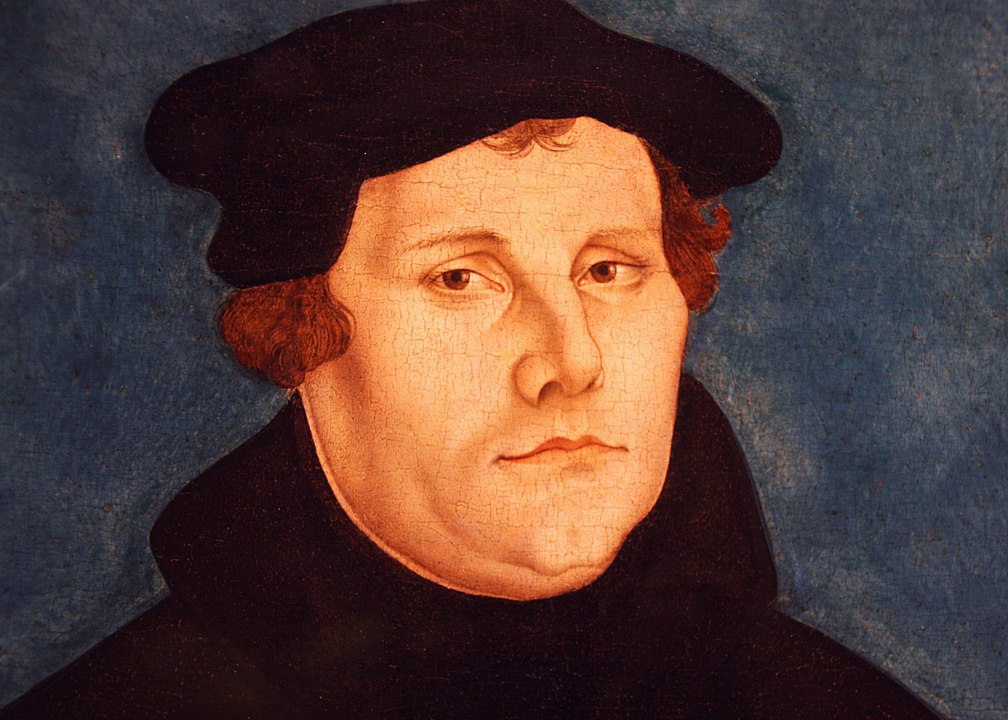
It was Martin Luther’s “95 Theses (or Ninety-five Theses)” from 1517 that kicked off the Protestant Reformation. The Germanic rulers eventually became Protestant and introduced the religion to Prussia and the northern regions. After Luther and the Catholic Church signed the Peace of Augsburg in 1555, they were able to live side by side in Germany.
To avoid further responsibility for failing to defend Catholicism, Holy Roman Emperor Charles V retired from political life in 1556. The Empire eventually passed to his brother, Ferdinand I, and then to his son, who became King of Spain. The Reformation and Counter-Reformation were major cultural movements in Europe that lasted for a long time.
The Protestants of Bohemia, however, rose out against their new Catholic ruler on May 23, 1618. The recently crowned monarch had determined to convert his country to Catholicism. After a fight, several delegates from the Catholic Empire were thrown out of the windows.
Starting the Thirty Years’ War was the defenestration of Prague. After Emperor Matthias I’s death in 1619, his cousin, Bohemian King Ferdinand II, was crowned Holy Roman Emperor. The Bohemian Czechs, still dissatisfied, nominated Elector Palatine Frederick V as their new king. Ferdinand II was forced to intervene in order to put down the rebellion.
Who fought in the Thirty Years’ War?
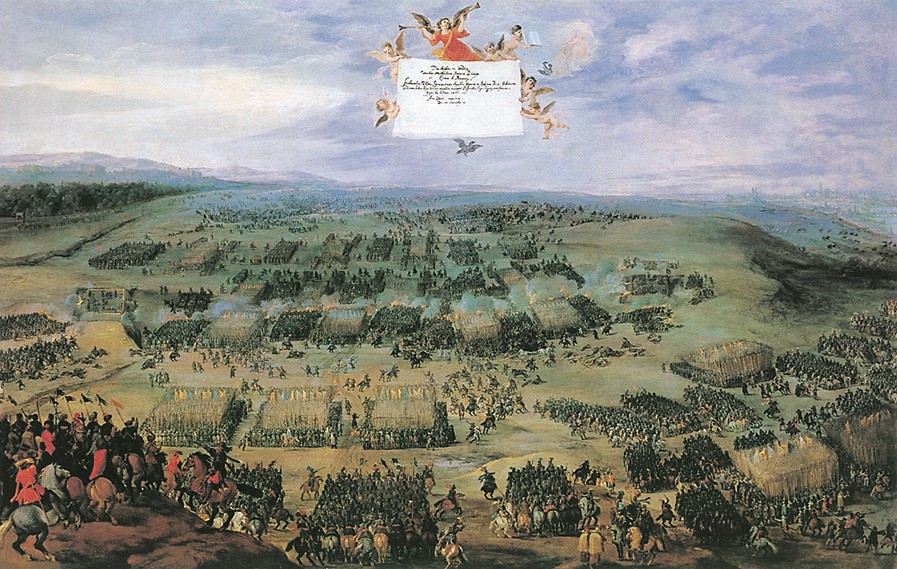
The religious struggle known as the Thirty Years’ War had its roots in Germany but quickly spread throughout Europe. Protestant lords of the Evangelical Union (including the Elector Palatine, the Duke of Neuburg, the Duke of Württemberg, etc.) rebelled against the Catholic Holy League in the wake of the Bohemian uprising (which included the Emperor, the Kingdom of Spain, Saxony, Poland, Bavaria, etc.).
The Bohemian army was decimated in the Battle of White Mountain on November 8th, 1620. The Peace of Lübeck was negotiated in 1629 when the King of Denmark arrived to help the Protestants at the end of 1624; his army was also beaten.
Although the King of Sweden had intervened the previous year in support of the Lutherans, he was killed in the Battle of Lützen the next year. On May 30, 1635, Emperor Ferdinand II signed the Treaty of Prague, ending fighting in the Holy Roman Empire. The situation went back to how it had been before the Peace of Augsburg. With its territory hemmed in by the Habsburgs, Louis XIII’s France saw benefits in weakening the empire.
France joined the war in 1635 on the side of Sweden after secretly intervening for years. In the Battle of Rocroi, which took place on May 19th, 1643, the Grand Condé decisively defeated the Spanish. The French defeated the Dutch Habsburgs in the Battle of Lens in 1648, bringing an end to the conflict.
Alsace and Lorraine during the Thirty Years’ War
During the Thirty Years’ War, Alsace and Lorraine took some of the worst hits. They were decimated by the passage of various armies, including Swedish, Spanish, and French forces. Locals’ embrace of brigands as a means to escape their plight just added gasoline to the chaos. Each country used mercenaries, some of whom were hard to command. Wheat prices hit all-time highs, so locals were reduced to subsisting on a diet of roots and herbs. The population of these areas dropped by half or more due to twenty years of hunger, plagues, and flight.
Did massacres take place during the Thirty Years’ War?
Military and civilian casualties during the Thirty Years’ War totaled between 4 and 7 million. In many cases, the different armies committed crimes (massacres, rapes, tortures, etc.) out of vengeance. To provide just one example, in 1631, the Catholic League’s forces sacked Magdeburg and murdered 25,000 of the city’s 30,000 residents.
The Planche des Belles Filles mountain in the Vosges got its name because it was where the ladies of a nearby town sought sanctuary from the Swedish invasion in 1635, only to commit mass suicide as the Swedes closed in. Despite receiving no or little compensation, the mercenaries cover their expenses by engaging in various forms of extortion.
Aftermath of Thirty Years’ War

Some German provinces (including Saxony, Palatinate, Alsace, and Lorraine) lost as much as half their population when the treaties of Westphalia were signed on October 24, 1648. About one-fifth of the population of central Europe was wiped off in this catastrophe. Even though France acquired additional territory (Metz, Toul, Verdun, part of Alsace, Belfort, Artois, and Roussillon), the country’s economy had a difficult time rebuilding. Sweden expanded its influence and territory in the region of the Baltic Sea. Denmark was no longer a major world power.
There was a new religious peace formed, and the German Empire was broken up into several smaller autonomous nations. Bohemia, however, remained a hereditary Habsburg possession. A number of countries, including Switzerland and the United Provinces (now the Netherlands), attained their freedom. However, the Habsburgs’ dominance and the might of the kingdom of Spain both started to diminish. Before the Treaty of the Pyrenees was signed in 1659, France and Spain remained at war. The union between Louis XIV of France and Maria Theresa of Spain brought peace back to Europe.
TIMELINE OF THIRTY YEARS’ WAR
May 23, 1618: The Defenestration of Prague
Two of the king’s lieutenants were thrown out of a window after they were assaulted by a group of Czech Protestants who stormed the royal castle in Prague. The transition of power from King Matthias to the devoutly Catholic Duke Ferdinand of Styria sparked the turmoil. As they were thrown out the window, the two defenestrated individuals landed safely in a mound of dung, but this incident signaled the beginning of the Thirty Years’ War (1618–1648).
November 8, 1620: The Battle of White Mountain
Count Jean de Tilly of Wallonia led a Germanic army that defeated the Bohemian Protestants west of Prague. The Protestant uprising occurred because Habsburg Emperor Ferdinand II tried to suppress the rebels’ desire for personal liberty. After this fight, the monarch annexed the area and repressed Protestants severely until 1918.
1621-The United Provinces resumed the war with Spain
After a twelve-year ceasefire with Spain, negotiated in 1609, Prince Maurice of Orange, also known as Nassau, resumed hostilities in 1613. In this context, the Thirty-Year War was the setting in which the United Provinces allied with France. However, Maurice of Nassau’s involvement in the war was short-lived due to his untimely death in 1625. His brother, Frederick Henry of Nassau, took up the cause and worked to have the United Provinces’ independence from Spain recognized in 1648.
March 31, 1621-Death of Philip III of Spain
Philip III, King of Spain, Portugal and the Algarves, died of thirst on March 31, 1621, after a long battle with illness. The monarch complained of the heat, but no one near him had the authority to reduce the wood fire. He fainted from the heat and died in front of everyone. His son Philip IV inherited the throne and this pious monarch spent most of his time praying and lavishing his palace with lavish displays of wealth.
March 31, 1621-Beginning of the reign of Philip IV of Spain
On March 31, 1621, at the death of his father Philip III, the prince of Asturias became King Philip IV of Spain, Portugal, and the Two Sicilies. Philip the Great, born in 1605, used his first years as king to further consolidate Habsburg dominance throughout Europe. Philip IV was a major benefactor and collector until the end of his reign in 1665.
July 10, 1621-Death of the Count of Bucquoy
Lord of the Spanish Netherlands and a master of defensive tactics, Charles Bonaventure de Longueval, Count of Bucquoy was a formidable opponent. He entered the service of the Holy Roman Empire in 1571, the year he was born, at the beginning of the Thirty Years’ War. In spite of his numerous triumphs, he was killed on July 10, 1621, while fighting the soldiers of Gabriel Bethlen, prince of Transylvania, during the Siege of Neuhäusl (now Nové Zàmky in Slovakia).
August 4, 1621-Swedish invasion of Livonia
On August 4, 1621, King Gustav II Adolph of Sweden led an army into Livonia, then part of Poland. Since 1600, Poland and Sweden had been at war over Polish King Sigismund III Vassa’s claims to the Swedish throne. With the help of this mighty assault, Sweden was able to take control of the Riga region and the surrounding area of Livonia and Courland.
February 25, 1628-Beginning of the War of Succession of Mantua
During Europe’s Thirty Years’ War (1618–1648), the Habsburgs faced out against the French on the southern front. After the death of the previous Gonzaga dynasty in 1627, the former was engaged in an effort over the right to succeed as Duke of Mantua in northern Italy. Louis XIII and Richelieu marched over the Alps in 1628 and captured Mantua the next year. The dukedom was restored to the French line known as the Dukes of Nevers.
July 7, 1628-Beginning of the siege of the city of Stralsund by Wallenstein
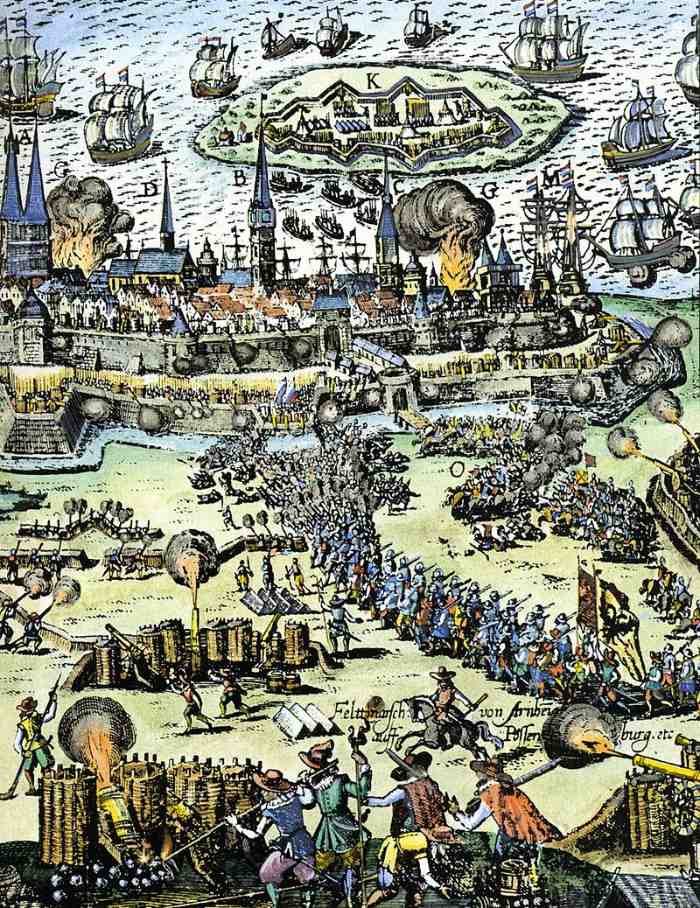
In 1618, a mob of angry Czechs threw a group of innocent people out of a window, sparking the Thirty Years’ War in Europe. In 1623, Albrecht Wallenstein, Duke of Friedland and generalissimo of the forces of the Holy Roman Empire, assembled a force of 50,000 soldiers. After pulling off a series of coups, he laid siege to Stralsund, a Hanseatic city in Mecklenburg-Pomerania, Germany. The eleven-week siege ended when Wallenstein was forced to call off the assault due to a shortage of troops.
May 22, 1629-Signature of the Peace Treaty of Lübeck
In the northern German city of the same name, the Peace of Lübeck was signed on May 22, 1629. After Catholic soldiers invaded the territories of Denmark, the two sides, Holy Roman Emperor Ferdinand II and King of Denmark Christian IV, signed the Peace of Lübeck. The conditions of this peace required Denmark to cease meddling with Holy Roman Empire conflicts, called for the release of detainees held by both sides, and required a renunciation of damages and interests resulting from the struggle.
Altmark Peace Treaty was signed on September 25, 1629
After the Swedish army was soundly defeated by Imperial and Polish-Lithuanian forces at Honigfelde, near Stuhm, and Gustav II Adolphus just avoided captivity, the Treaty of Altmark was signed. Eric Soop, a member of the king’s guard, came to the rescue after the monarch was wounded many times. Richelieu’s diplomatic efforts resulted in the signing of a six-year ceasefire. The whole Baltic coast was now under Swedish control. Poland handed up many East Prussian ports on September 25, 1629, including Königsberg and Danzig’s customs goods, from Livonia to the Dvina. In return, Sweden returned the inland areas of the Duchy of Prussia.
July 6, 1630 – Sweden enters the Thirty Years’ War
While the Thirty Years’ War was at its height, King Gustav II Adolphus of Sweden signed the Treaty of Bärwalde with France, securing French diplomatic and military help in the Baltic area. He landed in Pomerania on July 6, 1630, and established his army, the Hakkapeliitta, after a string of successful campaigns against Poland and the Baltic provinces. After almost a year of consolidation, he won another victory in 1631, this time against the Catholic League army in the pivotal Battle of Breitenfeld. The Danube will be invaded by his troops.
Beginning of the Magdeburg siege, November 1630
Magdeburg, the capital of Saxony-Anhalt, came under siege by the armed forces of the Holy Roman Empire. A Protestant stronghold, this city served as a major node in the Hanseatic League, an alliance of northern European merchant towns that dominated European commerce at the period.
The city’s strong defenses allowed it to hold out against the Catholics until the Swedish army of King Gustav II Adolphus, who had been victorious in battle ever since he joined the fight, arrived. Despite this, in 1631 the city fell to the Holy Roman Empire, who slaughtered the locals and then plundered, destroyed, and occupied the city. The word “Magdeburgization” has now come to mean “destruction” because of the bloodshed that occurred during this event.
December 1, 1630-George I Rákóczi becomes Voivode of Transylvania
On December 1, 1630, George I Rákóczi, the son of Sigismund II Rákóczi and the “voivode” of Transylvania, assumed the throne. His brother Stephen III Bethlen was the rightful king, but with the backing of the influential Catherine of Brandenburg, a member of the aristocracy, George was able to ascend to the throne instead.
He wed Zsuzsanna Lorántffy, and the couple had two sons who would eventually take over. The voivode supported the Protestant cause during the Thirty Years’ War by joining the armies of France and Sweden in their struggle against the Holy Roman Empire. In doing so, he protected Transylvania’s autonomy and the religious freedom of western Hungary.
On January 23, 1631, France and Sweden signed the Treaty of Bärwalde
In 1631, Louis XIII of France chose to back Gustavus Adolphus II of Sweden in his struggle against the Holy Roman Empire. With this action, France joined the Thirty Years’ War against the Habsburg Empire. The political, military, and economic alliance was established on January 23 with the signing of the Treaty of Bärwalde by the two sovereigns.
With the Swedish supplies, Cardinal Richelieu could outfit the whole royal fleet. In addition, Sweden was responsible for leading an army of 30,000 men and 6,000 knights to Germany. France, meanwhile, agreed to pay Sweden 1.5 million livres tournois year in debt. The duration of this pact was contingent upon the return of peace.
The Treaty of Cherasco, signed on April 6, 1631, officially ended the War of Succession of Mantua
The succession struggle for the Duchy of Mantua occurred on the periphery of the larger Thirty Years’ War. In the aftermath of the Gonzaga dynasty’s oblivion and the duchy’s disinheritance, it took a stance against the French in favor of the Habsburgs over Mantua’s ownership. Battles fought during the Thirty Years’ War eventually diverted attention away from Mantua.
Pope Urban VIII stepped in and sent a mediator, the future Cardinal Julius Mazarin. This day in 1631 marks the signing of the Treaty of Cherasco. The disputed land was partitioned between the warring parties, with France gaining control of the strategically important castle of Pignerol, which provided a gateway to the Po River plain in Italy.
Battle of Breitenfeld was won by the Protestants on September 17, 1631
The Protestants, under the leadership of Gustavus II Adolphus of Sweden, defeated the Catholics, under the direction of General Tilly, in the Battle of Breitenfeld during the Thirty Years’ War. On September 17, 1631, north of Leipzig in the town of Breitenfeld, the two armies engaged in battle.
Although the Catholic army was led by the light cavalry of Count Pappenheim, they were finally beaten by the cavalry squadrons intermingled with Gustavus Adolphus’ musket-armed infantrymen. This victory proved that mobile infantry and the might of guns could beat the large and well-supplied pike army of the Empire, thus additional Protestant nations joined Sweden in her quest for independence.
King Sigismund III Vasa of Poland and Sweden died on April 19, 1632
In 1587, upon the death of Stephen Bathory I, Sigismund III of the Vasa dynasty was chosen King of Poland and Grand Duke of Lithuania, notwithstanding the claims of Maximilian III of Austria. At 1594, Sigismund was anointed in Uppsala as the next King of Sweden, succeeding his father, also on the condition that Sweden may remain a Protestant nation. Back in Poland, he sought an alliance with the Habsburgs so he could rally central Europe’s might against the Turks.
As a result of his uncle’s efforts to seize power in Sweden while his absence, Sigismund was forced to abdicate the Swedish crown and depart the country, setting the foundation for a series of conflicts between Poland and Sweden. He invaded Russia with an army and seized various areas in the Smolensk area between 1605 and 1618. After the outbreak of the Thirty Years’ War in 1618, he took the side of the Catholics. Ladislaus IV, his son, took over the war effort after his death.
Death of Holy Roman Empire army head General Tilly, April 30, 1632
During the Thirty Years’ War, the Catholic League and the Holy Roman Empire both had their forces under the leadership of Jean t’Serclaes, Count of Tilly. He was born in 1159, grew up as a devout Catholic, and attended Jesuit school. In 1623, he defeated Christian of Brunswick in the Battle of Stadtlohn, and in 1626, he defeated Christian IV of Denmark at the Battle of Lutter, both of whose kings eventually signed the Peace of Lübeck.
His promotion to supreme commander came in August 1630, after Wallenstein’s departure. Magdeburg, which he had besieged against Gustav II Adolphus of Sweden in 1631, was almost destroyed thanks to his efforts, and he was afterwards defeated by the Swedes at Breitenfeld. He was mortally wounded on April 30, 1632, while attempting to stop their assault on Munich at the Battle of Rain (a.k.a Battle of Rain am Lech).
November 6, 1632-Death of Gustav II Adolphus of Sweden at the Battle of Lützen
In the midst of the Thirty Years’ War, in Leipzig in Saxony-Anhalt, King Gustav II Adolphus of Sweden and his Protestant army faced off against Generalissimo Wallenstein and the army of the Holy Roman Empire. The Swedish monarch was killed at the Battle of Lützen, making it a pivotal conflict. As soon as Wallenstein heard that the Swedes were coming, he sent word to General Pappenheim to meet up with his forces.
These last groups fled without delay, although they were still 40 kilometers from Wallenstein. After the first day of fighting went in favor of the Swedes, Pappenheim arrived with an additional three thousand cavalry to turn the tide of the battle. Pappenheim was killed in the first charge, while King Gustavus Adolphus was killed in a later charge around lunchtime. The Protestants, however, continued the fight and ultimately prevailed, saving Saxony from the Emperor.
November 6, 1632-Accession to the throne of Queen Christine of Sweden
At the Battle of Lützen on November 16, 1632, the Swedish monarch, Gustav II Adolphus, was gravely wounded. He had just one daughter, therefore in 1627 he abolished male devolution to ensure that she could replace him. Christine of Sweden, when just six years old, became monarch.
Until 1644, when she legally became an adult, she was under the care of Chancellor Axel Oxenstierna. After the Treaty of Westphalia in 1648, Queen Christine fired her guardian and pushed for permanent peace. With the territory ceded by this treaty, Sweden became the dominant power in the Nordic region. She secretly converted to Catholicism in 1654 and abdicated the throne; she was welcomed in Italy, where Pope Alexander VII gave her first communion.
November 8, 1632: Election of Ladislaus IV Vasa to the Polish throne and the beginning of his reign
Ladislaus was a member of the Vasa dynasty and the lone son of King Sigismund III of Poland. He was anointed tsar at the tender age of 15 by a cabal of boyar lords while his father fought the Russian army and attempted to capture Moscow, but the Russians flatly rejected this designation and rose up against the 3,000 Polish troops garrisoned inside the Kremlin. Ladislaus was ultimately beaten, although he continued to call himself Tsar of Russia until 1634.
A staunch supporter of the Catholic faith, he made his name in battle against the Ottomans in 1621 and the Swedes from 1626 to 1629. For a while, he even entertained the idea of conducting a crusade to wrest control of the Balkans back from the Ottomans. On November 8, 1832, the Sejm (the parliament of Polish nobility) voted to make Ladislaus King of Poland. Despite marrying Archduchess Cécile Renée of Habsburg, he declared Poland to be neutral throughout the Thirty Years’ War.
December 1, 1633-Death of the Infanta of Spain, Archduchess of Austria, and Governor of the Spanish Netherlands
Isabelle-Claire-Eugénie of Austria was the daughter of King Philip II of Spain and the granddaughter of King Henry II of France. She belonged to the House of Habsburg. This meant that in addition to Spain, she might also lay claim to the thrones of France and the duchy of Brittany.
Her marriage to Albert of Austria, son of Emperor Maximilian II, brought her the crown of the Netherlands as a dowry, and her court included prominent painters such as Rubens and Brueghel. The marriage was successful in bringing peace between the Catholic country of Spain and the Protestant nation of the Netherlands, allowing commerce to thrive. The peace between Albert’s death in 1621 and Isabella’s on December 1, 1633, did not last long. The Thirty Years’ War ended in 1648 with the Treaty of Westphalia, officially splitting the Netherlands from Spain.
1634-Beginning of the Franche-Comté
Franche-Comté was ruled peacefully by the Spanish throughout the Thirty Years’ War that ravaged the rest of Europe. After his death in 1598, King Philip II of Spain granted his daughter, Infanta Isabella of Spain, and her husband, Albert of Austria, control of the Netherlands and Franche-Comté. In 1611, France and her reaffirmed their treaty of neutrality over the Franche-Comté, which stipulated that both countries would maintain their neutrality until 1640.
Once both Isabella and her husband had passed away, her destiny was in the hands of King Philip IV of Spain. After many triumphs for the Holy Roman Empire, Richelieu assured King Louis XIII of France that Burgundy and Franche-Comté would be simple to take. Fearing further Catholic expansion, Louis XIII breached the treaty of neutrality in 1634 and sent a force of 25,000 troops under the command of the Prince of Condé. War between England and France, known as the Ten Years’ War, had just broken out and wouldn’t finish until 1644, when France agreed to terminate hostilities in return for 40,000 ecus.
February 25, 1634-Assassination of General Wallenstein after his impeachment by Emperor Ferdinand II
After several stunning victories for Emperor Ferdinand II’s side during the Thirty Years’ War, Commander Wallenstein went to Bohemia near Pilsen to reflect on his exploits with the help of astrologers and physicians. From there, he admittedly negotiated with the opposing powers to be installed on the Bohemian throne, jeopardizing the succession of the emperor’s son Ferdinand III. Wallenstein believed that his soldiers would not dare turn against him.
On February 18, 1634, however, an edict was published in Prague charging Wallenstein of high treason, and he fled to Eger to seek shelter from the Swedish troops stationed there. On the evening of February 25th, Eger was killed by a squad of dragoons comprised of Irish and Scottish soldiers. Piccolomini and Gallas, Wallenstein’s lieutenants, took his position. He is remembered as the one who first proposed the enormous war levy that funded the Austrian army.
September 5, 1634-Battle of Nördlingen and victory of Emperor Ferdinand III of Hungary over the Swedes and Lutherans
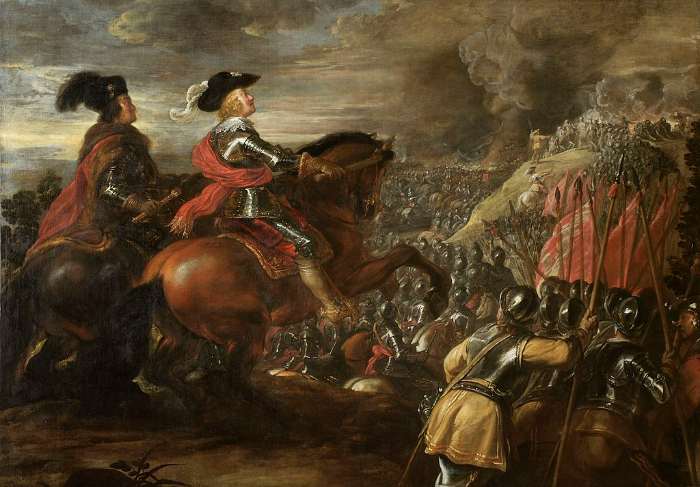
Gustav II Adolphus, King of Sweden, died a victorious death in the Battle of Lützen on April 19, 1632. Despite the Protestants’ triumph, which would ultimately recover Saxony-Anhalt, the Spanish imperial army marched on and took the city of Regensburg, threatening to expand once again into Saxony. After that, the Protestants, led by Gustaf Horn, made plans for a nighttime attempt to reclaim the city.
Poor troop management hindered their progress, and the artillery and supply trains lagged behind the troops. Since they had more time, the opposing forces readied for war. Between 12,000 and 14,000 Protestant soldiers were killed or captured at the Battle of Nördlingen on the night of September 5-6, 1634. As thus, this was the first time the Swedes had ever been defeated in the Thirty Years War. Seeing the imperial soldiers approach, France would have no option but to declare war on the Holy Roman Empire.
October 11, 1634-Flooding of Schleswig-Holstein in the North Sea caused by the Burchardi storm
This took place in the middle of the Thirty Years’ War and just after the plague had been eradicated from what is now German-controlled Schleswig-Holstein in 1603. Additionally, the North Sea seemed to be raging for years, and icebergs had already demolished a portion of the coastal dikes by the year 1625. When a result, a significant portion of the island of Strand was swept away by a storm surge on the night of October 11–12, 1634, as Burchardi raged off the shore.
A storm surge, also known as a mandränke, was a sudden rise in sea level caused by a combination of wind and a deep depression on the ocean bottom. Church records indicate that anywhere from 8,000 to 15,000 people perished as a consequence of the storm surge, including around two-thirds of Strand’s population. After the Island of Strand vanished, other islands formed in their place, including Nordstrand, Pellworm, Halligen Südfall, and Nordstrandischmoor.
On this day in 1635, France officially joined the Thirty Years War
Seventeen years after the beginning of the Thirty Years’ War in Europe, France became deeply involved in the fight. Because to Spain’s intervention on the side of the Catholics in the Empire, Louis XIII and Richelieu declared war on it. France renewed the battle because it feared being encircled by the Catholic Habsburgs of Austria and Spain after they defeated the Protestants in an alliance. As a result, it began supporting the northern Protestant forces.
Peace of Prague Treaty was signed on May 30, 1635
On May 30, 1635, John George I of Saxony, the Elector of Saxony, and Ferdinand II, the Holy Roman Emperor, signed the Peace of Prague at Prague. The former stood for the Saxony-Anhalt Protestant states. The civil conflict portion of the Thirty Years’ War was ended, and Bavaria’s electoral prestige was acknowledged, thanks to the peace. In the end, John George I of Saxony was able to acquire the northeastern German province of Lusatia. But the battle persisted, first at the instigation of the Swedes and afterwards of the French, until the Treaty of Westphalia in 1648.
June 22, 1636—Battle of Tornavento and victory of the Franco-Savoyards over the Spanish
In 1636, during the height of the Thirty Years’ War, the Cardinal of Richelieu convinced Duke Victor-Amédée I of Savoy to mount an attack on the Spanish duchy of Milan. French troops made it over the Ticino River, but ran into the Spanish force waiting for them at Tornavento, while their Savoyard allies were still stuck in Italy.
It was on June 22 when the Spaniards launched their assault, but the Duke of Savoy’s forces came to the rescue. Eventually, the Spanish withdrew to Boffalora, leaving the battlefield in disarray. To loot the nearby towns, the Franco-Savoyard army lingered for a few days before leaving Milanese territory for good. In other words, the first assault on Lombardy was doomed to fail from the start.
July 2, 1636: Phillipe IV of Spain ordered a siege of the Picardy town of La Capelle
Count Jean de Werth rose through the ranks of the Holy Roman Empire army after distinguishing himself in the Battle of Nördlingen, where he served with General Piccolomini. To Lorraine, Picardy, and Luxembourg in 1635 and 1636. Beginning in July 1636, they pillaged the area around the lower Meuse and on July 2 laid siege to the town of La Capelle. The presence of the invaders sparked the beginning of a French national spirit, and soon enough, a force of 50,000 men had assembled, forcing Jean de Werth and Piccolomini to retreat.
October 4, 1636-Battle of Wittstock and Swedish victory over the Emperor
Northern Germany was fought for during the Thirty Years’ War between the Catholic Holy Roman Empire and the Protestant Swedes and their allies. The two troops in 1636 were posted on opposite banks of the Elbe River. The Swedish army, led by General Johan Banér, crossed across and confronted the imperials south of Wittstock, in the area of the Scharfenberg hills.
There was a significant experience gap between the Swedish artillery and the Saxon infantry. Although Johan Banér’s army emerged victorious, the outcome of the battle had no long-term strategic ramifications. Even though the Swedes attempted to lay siege to the city of Leipzig, Brandenburg would not join them. This was because a new imperial army headed by Matthias Gallas (the successor of General Wallenstein) forced them to retire to their old position.
October 6, 1636-Victory in Szalonta of the Transylvanian prince George I Rákóczi over the Turks
George I Rákóczi ruled Transylvania as prince from 1630 until his death in 1648. Because to the death of his brother Etienne III Bethlen and the backing of the aristocratic Catherine of Brandenburg, he was able to ascend to the kingdom. On October 6, 1636, he beat the Turks in Buda at Szalonta, which was his first military triumph. Then, during the Thirty Years’ War, George I Rákóczi took a side with the Protestants.
February 15, 1637-Death of the Holy Roman Emperor Ferdinand II of Habsburg
Born in 1578, Ferdinand II of Habsburg was brought up by the Jesuits of Ingolstadt, who influenced him to become a staunch Catholic and an adversary of Protestantism. By inciting hostility among Bohemia’s Protestant nobility, he helped spark what would eventually become the Thirty Years’ War.
Assisted by his commander Tilly, he won the Battle of White Mountain in 1620, annexing Bohemia to the Holy Roman Empire. The Swedish army, headed by King Gustavus Adolphus II, intervened and ultimately won the Battle of Breitenfeld. As a consequence, the Thirty Years’ War consumed his entire reign and brought about the destruction of German society and industry. On the 15th of February, 1637, he passed away, and his son, Ferdinand III of Habsburg, took his place.
February 15, 1637-Beginning of the reign of the Holy Roman Emperor Ferdinand III
On July 13, 1608, Ferdinand III of Habsburg was born to Emperor Ferdinand II and Maria Anna of Bavaria. In 1625, he was crowned king of Hungary; in 1627, he was crowned king of Bohemia; but it wasn’t until Ferdinand II’s death in 1637 that he was officially crowned “King of the Romans,” i.e., the monarch of the Holy Roman Empire, to rule as Holy Roman Emperor. A renowned figure during the Thirty Years’ War, he gained notoriety for defeating the Swedish Protestants at the Battle of Nördlingen. In the years that followed, however, he was unable to successfully oppose the Swedes and their French backers. The Peace of Westphalia, Münster, and Osnabrück, which he was compelled to sign in 1648, effectively ended Holy Roman Empire hegemony over Europe.
September 28, 1637-Battle of Leucate and French victory over the Spanish
Leucate Castle, situated south of Narbonne, served as a fortress and strategic outpost for 500 years. From there, one could see the border between France and the Kingdom of Aragon. At the beginning of the Thirty Years’ War, the French army and the Spanish imperial army clashed at the base of the fortress. Spanish forces surrounded the city. The French defeated the Spanish on September 28, 1637, forcing the Spanish to retreat over the border. After the Treaty of the Pyrenees was signed in 1659, Louis XIV ordered the fortress to be destroyed.
October 7, 1637- Death of Victor-Amédée I, Duke of Savoy and Prince of Piedmont
Duchess of Savoy and Prince of Piedmont, Victor-Amédée I was born in 1587. In 1619, he wed Christine of France, who would eventually give birth to seven children, including his successor, Charles-Emmanuel II. With the Thirty Years’ War already in full swing when he assumed power, Victor-Amédée was soundly defeated in his first battle, losing the castle of Pignerol and a chunk of Montferrat. In the face of his setbacks, he decided he deserved a regal title and assumed the mantle of King of Cyprus, a position that rightfully belonged to his ancestors. The palace he built in Turin is now known as the Royal Palace. His death on October 7, 1637, in Vercelli came only a few days after his victories in the battles of Tornavento (1636) and Mombaldone (1637).
December 1, 1640 – Portugal regains its independence

Portugal’s modest aristocracy rebelled against the Spanish conquerors. After the assassination of King Sebastian of Portugal in 1578 in Morocco by Philip II of Habsburg, the Portuguese rebelled and reinstated their country’s independence by elevating one of their own to the throne; John of Braganza, who assumed the name John IV.
September 14, 1641 – Treaty of Peronne
King Louis XIII of France and Honoré II Grimaldi of Monaco signed the Treaty of Péronne on September 14, 1641. This 14-article treaty ended Spain’s dominion and brought the principality of Monaco back under French control. Honoré II’s Spanish holdings were seized by the French king, who in exchange gave him the fiefs of Valentinois, Carladès, Baux, and Saint-Rémy.
September 9, 1642-Louis XIII took Perpignan from the Spaniards
With the start of the Reapers’ War, Louis XIII’s army set out towards Roussillon to retake the territory. Attempting to retake the city from the Spaniards, the French began a siege on Perpignan. As there were only around 500 people remaining in the city by the time the siege ended on September 9, 1642, the governor opted to surrender on November 4, 1641. A few months later, Louis XIII passed away.
May 19, 1643 – Great Condé wins at Rocroi
In Rocroi, France, the French defeated the Spanish during the Thirty Years’ War (1618–1648). (Ardennes). At the age of 22, the Duke of Enghien—later renamed the Great Condé—displayed all of his military brilliance as the head of the French army. After a century of setbacks and internal strife, France finally returned to the world stage with this triumph.
July 31, 1644 – Reconquest of Lerida
French forces controlled almost all Catalan cities by 1642. In an effort to reclaim Lerida (today known as Lleida), King Philip IV of Spain ordered an attack to be conducted in the surrounding plain. The French united and mustered an army to oppose him, and they did so successfully. After suffering heavy casualties and waiting two years, the Spaniards were finally able to retake Lleida.
18 December 1644 – Majority of Christine of Sweden
Her father had gotten the nobility to agree to eliminate male exclusivity so that Christine of Sweden might succeed to the throne. She was just six years old when he died, but the question of who would succeed him was already determined, thus she was named to rule Sweden under the care of Chancellor Axel Oxenstierna. Christine, then 18 years old, overthrew the chancellor on December 18, 1644 in an effort to establish peace and put a stop to the hostilities with Denmark.
March 6, 1645 – Battle of Jankau
The imperial forces in southern Bohemia were defeated by the Swedish army on March 6, 1645, while the Swedes were making their way to Prague. During the Thirty Years’ War, the Battle of Jankau was one of the bloodiest engagements. With the imperial cavalry destroyed, the Swedes were free to launch an assault on the Austrian capital of Vienna in August of that year.
Battle of Alerheim; August 3, 1645
In the Thirty Years’ War, the Holy German Empire and France fought in the Battle of Alerheim (or Battle of Nördlingen). The French army was commanded by Duke Enghien, while the enemy was under the command of General Von Mercy. It was clear that both sides took heavy casualties, but the war was only ended when General Von Mercy fell; his soldiers dug in and gave the French the win.
Treaty of Brömsebro was signed on August 13, 1645
In 1643, Sweden, Denmark, and Norway began fighting each other as part of the Thirty Years’ War. This war (Torstenson’s War) ended with the Peace of Brömsebro. This pact not only put a stop to the fighting, but it also freed Swedish ships from tolls and granted Denmark and Norway significant areas as security for their promises.
May 1646 – First siege of Lérida
France began its siege of the Spanish city of Lérida in May 1646. Henri de Lorraine-Harcourt was the man in charge of them. Only two years had passed since the Spanish had gained control of the city, but that hadn’t stopped them from preparing to defend it with all they had. After nearly six months, the French were compelled to abandon the city and flee to Balaguer. They took nothing with them.
Dunkirk’s Siege began on September 7th, 1646
When Duke Louis II of Bourbon-Condé found himself in charge of the Flemish army on his own, he came up with a clever plan: assault Dunkirk, which had been in Spanish hands for more than eighty years. Poles and Ukrainians joined his ground forces, while Dutch sailors bolstered his navy. The gates of Dunkirk were opened on October 11, 1646, since the Spanish could not muster the backing of the English, who did not want to sever ties with France.
June 17, 1647 – End of the siege of Lérida
When Louis II of Bourbon-Condé, also known as Le Grand Condé, arrived on May 12, 1647, he immediately laid siege to the city of Lerida. To dissuade him from returning to France, Mazarin encouraged him to believe that he might succeed at Lérida, where Henri de Lorraine-Harcourt had been defeated the year before. They issued the challenge, and Le Grand Condé was happy to accept it. Due to massive casualties and desertions, the siege was lifted on June 17th, 1647.
August 20, 1648 – Last battle of the Thirty Years War
The Battle of Lens occurred in 1648 on August 20. Given its association with the August 17, 1648, seizure of Lens by Archduke Leopold-Guillaume of Habsburg, even though the actual fighting occurred in an adjacent plain, this battle is known by its nickname. After the failure at the Siege of Lérida, Louis II de Bourbon-Condé, sometimes known as the Great Condé, vowed to his men, “We must win or die. We shall have triumphed against the Spaniards.”
September 8, 1648 – The independence of the United Provinces was recognized in the treaty of Münster
The Treaty of Münster acknowledged the United Provinces’ independence from Spain as part of the signing of the Peace of Westphalia that ended the Thirty Years’ War. After William I of Nassau’s insurrection against Duke Alba, all hostilities between the United Provinces and Spain were finally put to rest.
October 24, 1648 – Peace of Westphalia
The Catholic Church and the Protestant United Church of Christ agreed to the Peace of Westphalia. The first one took place in Münster on September 8 and the second one occurred in Osnabrück on August 6. This marked the conclusion of the Thirty Years’ War and the acquisition by France of a portion of Alsace, by Sweden and Germany of new territory, and by Germany and Switzerland of newfound freedom.
Bibliography:
- Groenveld, Simon (2009). Unie – Bestand – Vrede. Drie fundamentele wetten van de Republiek der Verenigde Nederlanden. Hilversum: Uitgeverij Verloren. p. 200. ISBN 9789087041274. (in cooperation with H.L.Ph. Leeuwenberg and H.B. van der Weel)
- Bireley, Robert (1976). “The Peace of Prague (1635) and the Counterreformation in Germany”. The Journal of Modern History. 48 (1): 31–69. doi:10.1086/241519. S2CID 143376778.
- Bonney, Richard (2002). The Thirty Years’ War 1618–1648. Osprey Publishing.
- Briggs, Robin (1996). Witches & Neighbors: The Social And Cultural Context of European Witchcraft. Viking. ISBN 978-0-670-83589-8.
- Brzezinski, Richard (2001). Lützen 1632: Climax of the Thirty Years War: The Clash of Empires. Osprey. ISBN 978-1-85532-552-4.
- Chandler, David (1990). The Art of Warfare in the Age of Marlborough. Spellmount Publishers Ltd. ISBN 978-0946771424.
- Peter Elmer, Challenges to Authority: The Renaissance in Europe: A Cultural Enquiry, Volume 3, page 25.
- Norrhem, Svante (2019). Mercenary Swedes; French subsidies to Sweden 1631–1796. Translated by Merton, Charlotte. Nordic Academic Press. ISBN 978-91-88661-82-1.
- O’Connell, Daniel Patrick (1968). Richelieu. Weidenfeld & Nicolson.
- O’Connell, Robert L (1990). Of Arms and Men: A History of War, Weapons, and Aggression. OUP. ISBN 978-0195053593.
- Outram, Quentin (2001). “The Socio-Economic Relations of Warfare and the Military Mortality Crises of the Thirty Years’ War” (PDF). Medical History. 45 (2): 151–184. doi:10.1017/S0025727300067703. PMC 1044352. PMID 11373858.
- Outram, Quentin (2002). “The Demographic impact of early modern warfare”. Social Science History. 26 (2): 245–272. doi:10.1215/01455532-26-2-245.
- Whaley, Joachim (24 November 2011), “Germany and the Holy Roman Empire in 1500”, Germany and the Holy Roman Empire Volume I: Maximilian I to the Peace of Westphalia, 1493-1648, Oxford University Press, pp. 623–624,





